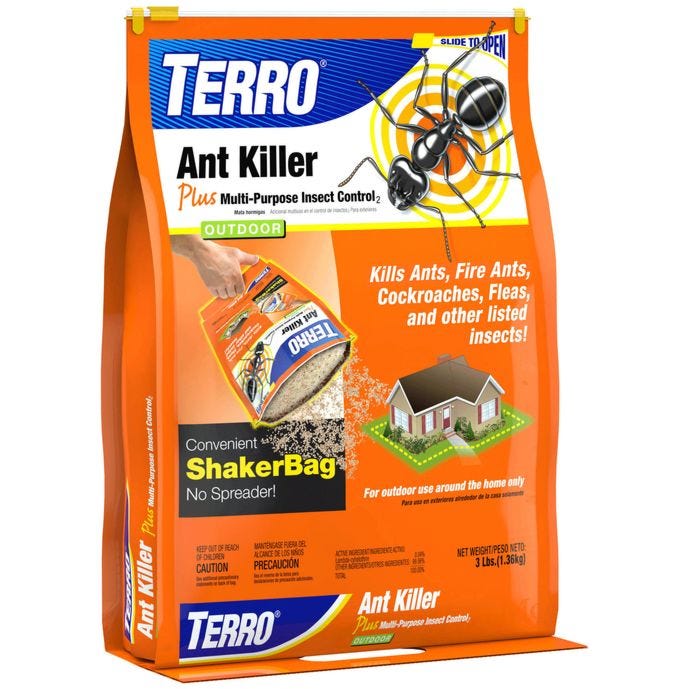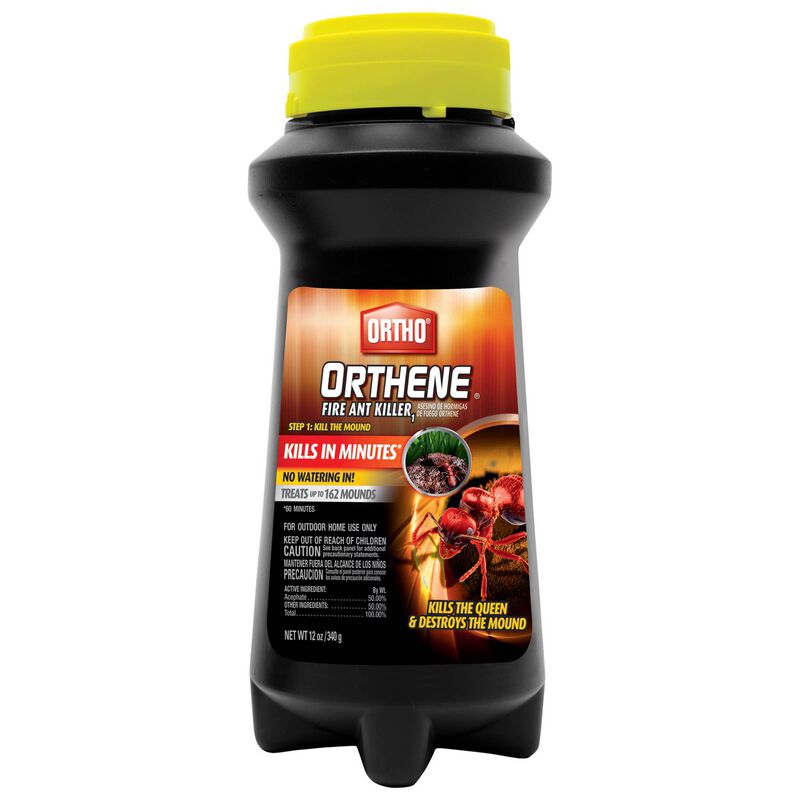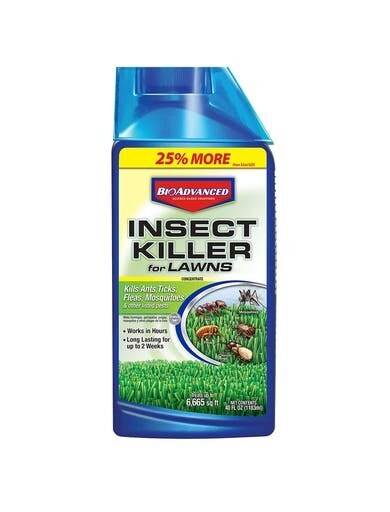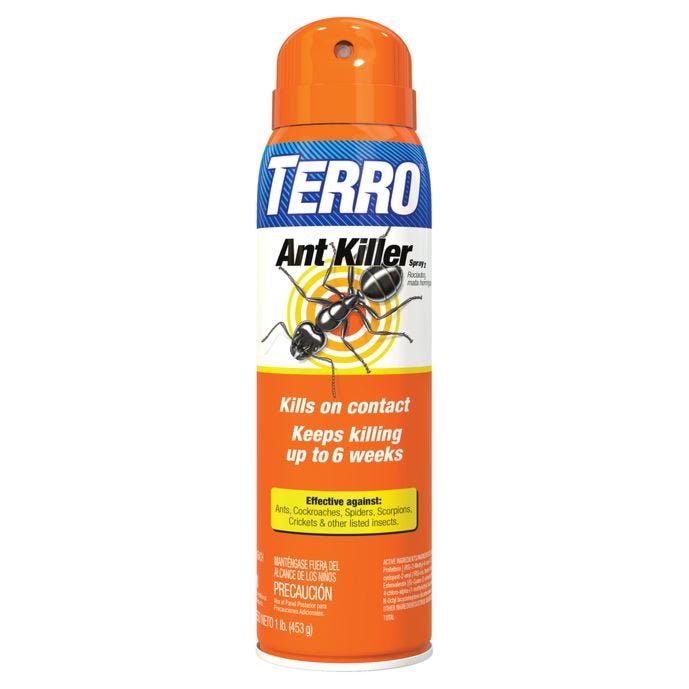Apply ant killer in late spring or early fall when ants are most active. Choose a dry, mild day for best results.
Seeking to maintain your home as a sanctuary free of pests, particularly ants, can be a year-round struggle. Ants tend to invade homes and gardens more aggressively during specific seasons, making these the optimal times to counteract their intrusion. By treating your spaces with ant killer in the seasons they’re actively foraging, you increase the likelihood of disrupting their colonies and preventing infestations.
Effective ant control hinges on understanding their behavior; by applying ant killer when they’re on the hunt for food, you’re not only eliminating the scouts but also impairing the queen’s ability to replenish her numbers. A strategic application can dramatically reduce ant populations and safeguard your home from these persistent invaders.

Credit: www.terro.com
Introduction To Ant Infestations
The silent crawl of ants into your home signals a creeping problem. These tiny invaders set up colonies, causing a multitude of issues.
Identifying Ant Problems
Detecting an ant infestation requires a keen eye. You might spot:
- Live ants: A clear sign of an infestation. Especially if seen indoors often.
- Ant pathways: A line of ants to and from their colony.
- Ant nests: Small piles of earth or dirt indicate a larger colony.
The Impact Of Ant Colonies On Your Home
Ant colonies inside your home mean trouble. Their impact:
- Structural damage: They burrow through wood and insulation.
- Food contamination: Ants carry bacteria and spoil food sources.
- Electrical hazards: Some ants chew through wires, posing fire risks.

Credit: ortho.com
Life Cycle Of Ants
Understanding the life cycle of ants is crucial in determining the optimal time to apply ant killer. Ants go through distinct stages of development, and their seasonal behaviors influence when they are most vulnerable. Let’s delve into the fascinating stages of ant development and uncover the seasonal activities that these insects exhibit over a year.
Stages Of Ant Development
The development of ants is a fascinating process known as metamorphosis. This process includes several key stages:
- Egg: All ants start as eggs, which are tiny and oval-shaped.
- Larva: After hatching, they become worm-like larvae with no eyes or legs.
- Pupa: Larvae transform into pupae, where they develop legs and antennae.
- Adult: Finally, they emerge as adults, ready to work for the colony.
Ant control measures are most effective when targeting the colony during the larval or pupal stages.
Seasonal Behaviors Of Ants
Ant activity varies with the seasons, influencing the best times to apply treatments.
| Season | Ant Behavior |
|---|---|
| Spring | Queens lay eggs and colonies expand, making spring a strategic time for ant control. |
| Summer | Ants are highly active, foraging for food; this can be the ideal time to use baits. |
| Fall | Ants prepare for winter, and baiting can effectively disrupt their preparations. |
| Winter | Activity slows down, but indoor nests may still need to be treated. |
By aligning ant treatment with seasonal behaviors, you enhance the effectiveness of ant control methods.
Types Of Ant Killers
Ants can be a real nuisance in homes and gardens, and knowing the right ant killer to use is essential. Different situations call for different types of ant control methods. Here’s a closer look at some of the most effective ant killers available on the market.
Chemical Ant Baits
Chemical ant baits are a popular solution. They attract ants with a food source. Once ants consume the bait, they carry the poison back to their colony. This method targets the entire colony rather than just the ants that are visible. Common ingredients in these baits include:
- Borax (sodium borate)
- Fipronil
- Indoxacarb
- Hydramethylnon
It is important to place the baits where ant activity is high. This ensures the bait reaches the maximum number of ants. Always follow the instructions to keep pets and children safe.
Natural Ant Repellents
For those preferring a greener approach, natural ant repellents may be ideal. These methods repel ants without the use of synthetic chemicals. Natural repellents often use ingredients like:
| Ingredient | Use |
|---|---|
| Vinegar | Spray on ant trails |
| Lemon Juice | Use at entry points |
| Peppermint Oil | Apply where ants enter |
| Cinnamon | Line around home perimeter |
Create mixtures or use them as is in areas where ants frequent. Natural repellents are safe for use around children and pets. They require more frequent application than chemical options.
Pre-application Considerations
Before declaring war on ants, smart steps ensure victory. Knowing when to strike is as crucial as the strike itself. Successful ant control begins with some critical pre-application steps. These steps help prevent harm to people, pets, and plants.
Conducting A Thorough Inspection
Identify and understand the enemy. Before applying ant killer, inspect your home carefully. Search for ant trails and nesting areas. Check indoors and outdoors. Common ant hideouts include:
- Kitchen counters
- Wall crevices
- Moist areas
- Wood piles
Determine the ant species. Different ants need different treatments. Sweet baits attract some, while protein lures others.
Safety Measures And Risks
Ant killers contain chemicals that can be hazardous. Read labels carefully.
- Wear protective gear: Gloves and masks are a must.
- Keep children and pets away: Seal off treated areas.
- Know first aid: Prepare for accidental exposure.
Avoid using ant killer near food or water sources. Protect local wildlife and waterways by being mindful of runoff.
Optimal Timing For Anticide Application
Kicking out unwelcome ants starts with correct timing. Applying ant killer effectively stops invasions and safeguards your home. Let’s discover the best times to declare war on ants.
Best Seasons For Treatment
Ants are not just nuisances; they can wreak havoc all year long. Bold winter cold and summer heat change their activity. Knowing this helps plan your attack.
- Spring: Treat early, as ants wake from dormancy.
- Summer: Hit hard when ants forage for food.
- Fall: Ants stock up for winter – a perfect time to take action.
- Winter: In mild climates, treat any active colonies.
Weather Conditions Favoring Ant Control
Dry or slightly moist weather makes the best ant-fighting ally. High moisture or a forecast of rain can wash away your efforts. Ideal conditions include:
- Calm, overcast days with no wind.
- Warmth with the absence of intense sunlight.
- A dry forecast for at least 24 to 48 hours post-application.
Targeting The Colony
Effective ant control hinges on targeting the source: the colony. Without reaching the queen and her subjects, ant invasions persist. Focus on ant behavior patterns. Employ tactics to infiltrate the colony’s heart. A strategic approach maximizes ant killer effectiveness, ensuring lasting results.
Strategies For Reaching The Queen
Reaching the queen ant is crucial for colony elimination. Implement these steps:
- Use bait stations: Place baits near colony entrance points. Worker ants carry poison back, sharing it with the queen.
- Apply non-repellent insecticides: Such insecticides don’t kill on contact. They allow ants to bring chemicals to the nest.
- Time treatments precisely: Late spring and early fall are ideal. These are peak times for ant activity.
Destroying Ant Trails
Ants leave invisible pheromone trails. These trails guide others to food sources. Interrupting these paths is essential. Try these methods:
| Method | Description | Frequency of Application |
|---|---|---|
| Vinegar solution | Mix equal parts water and vinegar. Wipe surfaces to erase trails. | Once daily until trails cease |
| Diatomaceous earth | Sprinkle around ant paths. Its abrasive nature disrupts ant exoskeletons. | As needed, while ant activity is observed |
| Boiling water | Pour over ant trails and into the entrance of anthills. | Once, assess results before repeating |
Post-application Monitoring
Victory over pests is not just about application but also about monitoring results. A critical step after deploying ant killer is evaluating its success over time. Effective ‘Post-Application Monitoring’ lets you know if the battle is won, or needs a fresh strategy. Let’s delve into how to ensure your efforts have not been in vain.
Assessing Efficacy
After ant killer application, give it time to work. Keep a close watch daily. You should start seeing fewer ants. See no ants after one week? Kudos – it’s working! Not sure? Consider these checkpoints:
- Dead ants signal the treatment is effective.
- No new mounds indicate ants are not returning.
- Continued ant activity may mean additional treatment is needed.
Signs Of Reinfestation
Stay vigilant even if initial signs are positive. Ants can bounce back. Regular checks are crucial. Take note of new signs:
| Observation | Meaning |
|---|---|
| New ant trails | Possible reinfestation |
| Presence of scouts | Colony may be nearby |
| More mounds | New nests forming |
Seeing these signs? Act swiftly. It could save your home from another full-blown invasion. Continuous effort ensures long-term anthill ceasefire.
Integrated Pest Management
Dealing with ants requires strategy as much as it does action. ‘Integrated Pest Management’ (IPM) offers a sustainable approach to managing pest issues like ant invasions. It combines different methods for long-term prevention and control, reducing the reliance on chemical ant killers. Let’s explore the techniques and preventive measures essential in IPM.
Combining Techniques For Effective Control
IPM doesn’t rely on just one tactic. It uses various strategies together for best results. Consider these steps:
- Identify the ants – Knowing the species helps tailor your approach.
- Use bait stations – They target ants without widespread chemical use.
- Employ barriers – Diatomaceous earth or essential oils can deter ants naturally.
- Monitor Ant Activity – Track progress to adjust your methods as needed.
| Method | Description | Frequency |
|---|---|---|
| Bait Stations | Ant-specific insecticide that they take back to the colony. | As needed |
| Barriers | Non-chemical deterrents placed at entry points. | Check monthly |
Preventive Measures For Future Infestations
Stopping ants from returning is just as crucial as eliminating them. Here are key actions to take:
- Seal entry points – Cracks and crevices are gateways for ants.
- Maintain cleanliness – Reduce food and water sources that attract ants.
- Routinely inspect – Regular checks help spot early signs of ants.
Remember, IPM is about balance and targeting the specific problem at hand. It leads to a safer and healthier environment for everyone.

Credit: bioadvanced.com
Frequently Asked Questions For When To Apply Ant Killer
What Is The Best Time For Ant Control?
The optimal time for applying ant killer is early spring. This is when ants emerge from hibernation and are most active, making it easier to target them before they can establish larger colonies. Timing your application can prevent major infestations.
How Often Should I Apply Ant Killer?
Apply ant killer at the start of the season and follow up every three months. It’s essential to reapply after heavy rain or watering as this can dilute the effectiveness of the ant killer, ensuring consistent control throughout the year.
Can I Use Ant Killer In The Garden?
Yes, but select the appropriate type. Choose ant killers labeled for garden use to avoid harming plants. Always adhere to the product’s instructions to protect beneficial insects and the surrounding ecosystem while controlling ant populations.
Does Weather Affect Ant Killer Effectiveness?
Absolutely. Ant killers are most effective in dry conditions. Moisture can break down the active ingredients, reducing efficacy. Apply when there’s no rain forecasted for at least 24 hours to ensure the product effectively targets the ant colony.
Conclusion
Timely application is key to effectively managing ant infestations. Embrace the guidelines shared to pinpoint the optimal moment for ant killer deployment. Remember, early spring or following signs of activity ensures the best results. Protect your home with this proactive pest control strategy and enjoy a pest-free environment.

I’m MD Tanvir, and I bring years of expertise gained from working closely with pest control companies to the forefront. My journey in the industry has inspired me to launch Bug Battler, a platform aimed at equipping people with the know-how to combat pests autonomously. Through Bug Battler, I aim to empower individuals with practical insights to tackle pest infestations effectively.

